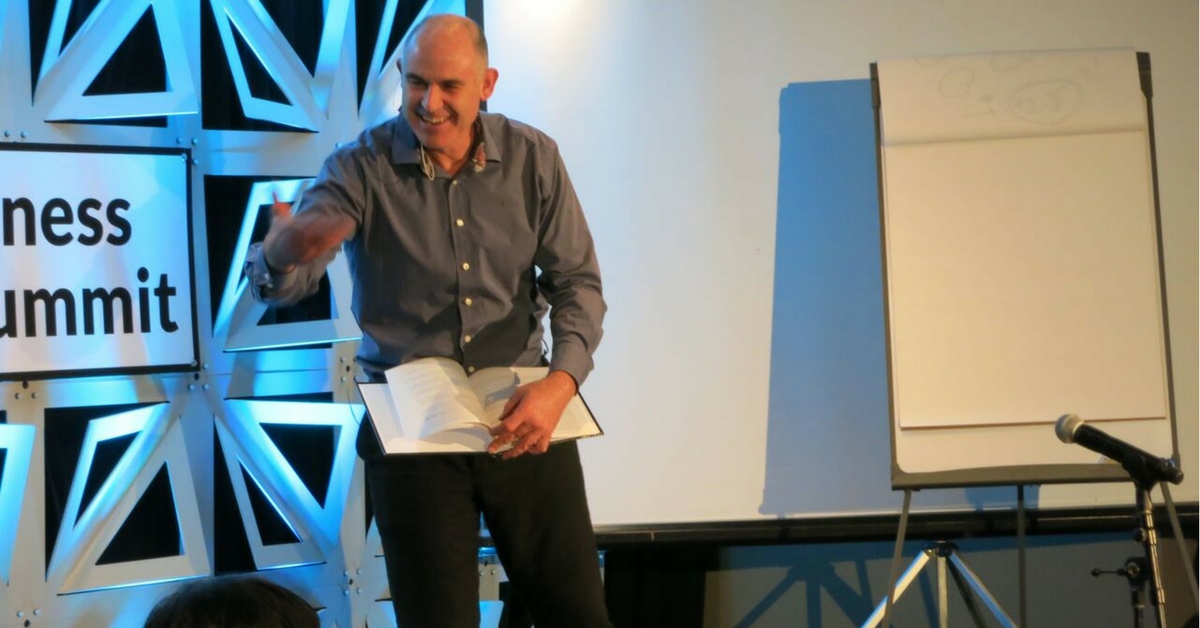
Understanding client motivation goes a long way toward mastering your architecture sales techniques. Never underestimate the power of instincts.
When facilitating marketing workshops in Miami, I decided to bring along my wife Julia. After we arrived, we headed down to South Beach to walk around and take in the sights. Now, keep in mind that we are from New Zealand and come along for the walk …
It doesn’t take long before Julia starts to cause pedestrian chaos.
Instincts Can Maintain Order
Each of Julia’s ‘victims’ is forced to stop as they step right, only to find her stepping left. They counter her move by stepping right again to find that she is doing the opposite. After several attempts to bypass Julia, they are now forced by social protocol to exchange awkward apologies before they can finally find a way past her.
While they may have managed to finally escape, Julia has a new victim lined up 10 meters down the street. The same embarrassing dance starts. All poise and walking grace are lost by both parties, and then yet another victim is left wondering why the foot traffic is so awkward to navigate today.
What is Julia’s chaos-causing secret?
It's simple – in New Zealand, people drive on the left side, while in the U.S., people drive on the right. Unconsciously, that’s also how we all walk down the street, so that order is maintained.
Julia realizes what’s been going on as I explain the problem to her, so she decides to stop unintentionally confronting honest Americans. It makes no difference, however, as her instincts slowly take back over and she performs yet another inelegant sidewalk dance with poor, unsuspecting foot traffic.
Implement Win-Win Strategy
How does this relate to selling high-priced services? Natural instincts are hard to overcome, so it pays to make sure that you are working with client instincts in your favor by understanding client motivation. Let me explain …
I went to a very entertaining options trading seminar with a guy named Brendon. At the end of the seminar, he made an offer. I had absolutely NO intention of joining his $2,000 course, but I sat there and listened anyway.
Not only is it difficult for humans to say ‘no,’ but the natural instinct is to procrastinate and say, ‘Hmm … I like the idea, but I need to think about it.’ Once people go home, they never think of it again and never say yes.
So Brendon does something clever; he outlines the course details (which seem reasonable) and the price and then offers a decent discount to anyone willing to sign up ‘today.’ I was intrigued, but not enough to sign on the dotted line.
Then Brendon says, ‘Fill out the application today and you still get a discount and you can cancel up until Friday if you change your mind.’
So now I can get the discount AND have more time to think about it? I like it. It seems like I can have the best of both worlds if I complete the form.
Selling Through Psychology (And Understanding Client Motivation)
As the days roll by, I visualize doing this course and kind of like the idea, but still feel like I will opt out. Suddenly, the weekend arrives and I realize that I’ve opted ‘in’ through inaction; Brendon had used my procrastination instincts against me. It’s called selling through psychology. You'll have an easier time understanding client motivation by using these techniques.
Here are a few tips to highlight these points …
-
People Buy Based on Feelings and Value
In sales, you can get someone halfway to buying based on a feeling and then give them the push to the finish line by showing them their personal value from the product and/or why YOUR service will be a better choice for them in the long run … and all because you took steps in understanding client motivation.
-
A Consumer’s Behavior is Largely Based on Cultural Factors and Instincts
Cultural dynamics usually dictate the buying style of every individual. Getting to know your customer or target audience will provide you with the knowledge it takes to sell to different groups of people. Aspects such as economic situation, age, motivation, and beliefs all factor into the decision to buy or say yes. Also, as confirmed in the stories above, people hold on tightly to their baser instincts and habits. Use those factors of human nature to help make it easier for potential clients to say ‘yes.’
-
Sell with Empathy and Genuine Excitement
I’ve said it before many times – people buy and use services from those that they like and trust (check out our post on architect networking). When it comes to selling and advertising your architecture services, take pride in those services and let it shine through in every interaction. People don’t just buy your service or product – they are buying into you. Everyone wants to be a part of something great, so show them how and why you are the best investment.
-
Be Ready to Address your Client Needs Before You Even Meet
A crucial part of client service is to know and understand what your target client needs. Even if they don’t know what that is, be prepared to fill in the blanks for them and prove that what you offer is exactly what they are looking for. Click here for more information on how to overcome client fee objections. Here's a secret … address them before they happen.
Hope you enjoyed my advice on understanding client motivation. To find your ideal clients, read ‘how to find your fish.'
